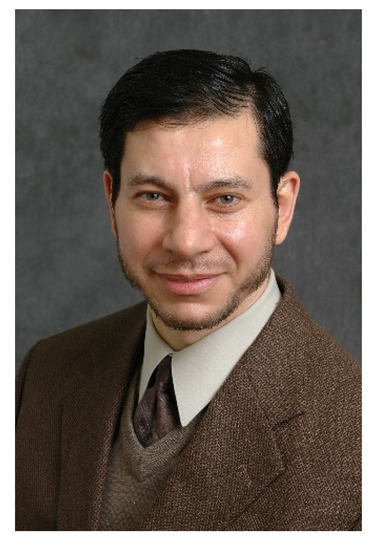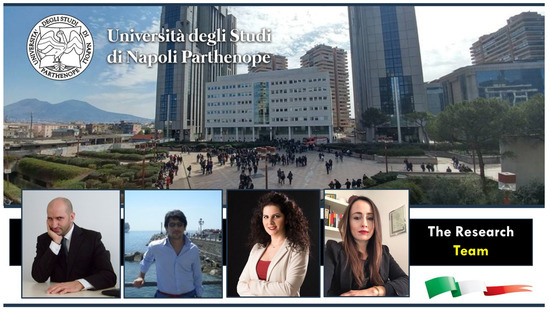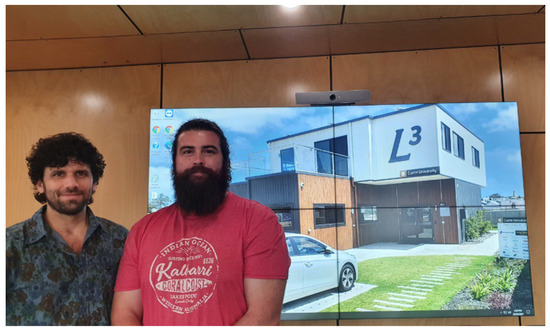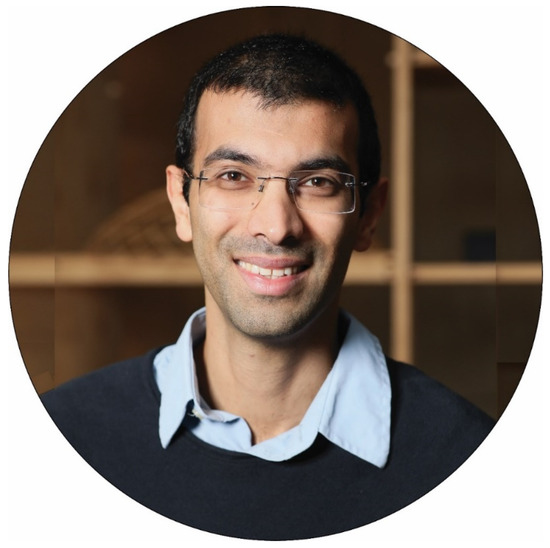Buildings is introducing the Best Paper Award to recognize outstanding papers published in the journal. We are pleased to announce the “Buildings Best Paper Award” for 2018. Nominations were chosen from all papers published between 1 January 2018 and 31 December 2018. The Selection Committee examined each paper and expressed their preferences, releasing the rankings of the “Buildings 2018 Best Paper Award”.
The Vertical Farm: A Review of Developments and Implications for the Vertical City (10.3390/buildings8020024) [1]
By Kheir Al-Kodmany (Figure 1)

Figure 1.
Dr. Kheir Al-Kodmany.
As cities faces serious challenges of increasing urban population and climate change, vertical farming (VF) has the potential to play a critical role in the sustainability of food. New high-tech cultivation methods, including hydroponics, aeropnics and aquaponics, as well as advancements in greenhouse and supporting technologies, such as multi-racking mechanized systems, recycling systems, LED lighting, solar power, wind power, storage batteries, drones, computing power, software applications, databases, and The Internet of Things, are likely to coalesce into efficient food production systems soon.
My research on VF has attracted the attention of students, researchers, and media. For example, Mr. Tatsuya Yamada, an IMC researcher in Japan, traveled to my office in Chicago to learn about vertical farming. Students around the globe have contacted me to learn about the topic. My published article in the journal Buildings has been viewed 62,426 times, see https://www.mdpi.com/2075-5309/8/2/24 (accessed on 22 February 2021), and received 109 citations, according to Google Scholar. A media article with the title “Elon Musk’s brother wants to transform farming” cites this research as well; see https://www.cnn.com/2020/02/28/business/musk-vertical-farm/index.html (accessed on 22 February 2021).
Dr. Kheir Al-Kodmany is a Professor of Sustainable Spatial Planning and Urban Design at the University of Illinois at Chicago (UIC). He has published six major books and over 100 papers. He was invited to lecture in dozens of world’s renowned universities and sits on the editorial board of 20 journals. Before joining the UIC faculty, he worked for the Chicago firm Skidmore, Owings & Merrill.
Life Cycle Assessment (LCA) of Different Kinds of Concrete Containing Waste for Sustainable Construction (10.3390/buildings8050070) [2]
By Francesco Colangelo, Antonio Forcina, Ilenia Farina and Antonella Petrillo (Figure 2)

Figure 2.
Research Group at Department of Engineering—University of Napoli “Parthenpe”, Italy (Francesco Colangelo, Antonio Forcina, Ilena Farina, Antonella Petrillo).
Concrete production causes significant environmental damage during its entire life cycle due to the large consumption of natural aggregate. The aim of this research was to use the Life Cycle Assessment (LCA) methodology to conduct a comparative analysis of four different concrete mixtures, i.e., construction and demolition waste (CDW), incinerator ashes, marble sludge, and blast furnace slag. The LCA study was implemented in the Campania Region of Italy. The main contribution of the study was that it proposed the use of “green” recycled aggregates in concrete production in order to assess the reduction of potential adverse impacts, from both environmental and energy perspectives. The main results of the research indicated that the use of recycled aggregates is a potential field of research that could ensure tangible environmental benefits in the future in the context of the Campania Region and in a national context. In addition, the study points out some critical issues. In particular, the LCA analysis did not consider the technical and economical aspects. Thus, starting from the current scenario, three main issues will be investigated in future research. The first issue concerns the development of a life cycle costing analysis (LCC) to determine the most cost-effective option among the four alternatives. The second issue is concerned with the analysis of the environmental and economic implications as a function of different distances, which affect the impacts due to transport. Based on these sensitivity analyses, it will be possible to choose the available resources that generate the lowest environmental and adverse economic impacts. The third line of research will be concerned with the investigation of the use of innovative composite materials.
Strategies for Applying the Circular Economy to Prefabricated Buildings (10.3390/buildings8090125) [3]
By Roberto Minunno, Timothy O’Grady, Gregory M. Morrison, Richard L. Gruner, and Michael Colling (Figure 3)

Figure 3.
Dr Roberto Minunno (left) and Tim O’Grady (right) inside the Legacy Living Lab, showing it in its visualization space behind them.
We wrote the paper Strategies for Applying the Circular Economy to Prefabricated Buildings as a theoretical basis for producing circular economy buildings. The main result of our research is showing that the most effective way to do so is, generally, by reusing building components, and prefabricated buildings can enable that practice.
This paper was the foundation of the project that evolved into building the first circular economy movable research facility in Australia: the Legacy Living Lab (L3; more info here).
L3 is a space for co-innovation and co-creation where research, industries and society meet to introduce the building sector to circular economy. L3 is a modular, disassemblable, adaptable and movable building. Its construction saved 88% of greenhouse gasses when compared to traditional modular buildings.
We realize that the built environment was not ready for the drastic change of building within a circular economy. Still, that did not stop us (Tim O’Grady, Dr Roberto Minunno and Professor Greg Morrison) from addressing this challenge and creating it. Two years later, we proudly introduce you to L3, a successful project that stemmed from this awarded paper.
Probabilistic Risk-Based Performance Evaluation of Seismically Base-Isolated Steel Structures Subjected to Far-Field Earthquakes (10.3390/buildings8090128) [4]
By Aryan Rezaei Rad (Figure 4) and Mehdi Banazadeh

Figure 4.
Dr. Aryan Rezaei Rad.
Dr. Aryan Rezaei Rad is a structural engineer and postdoctoral researcher at École Polytechnique Fédérale de Lausanne (EPFL), as well as the NCCR Digital Fabrication at ETH Zurich. Dr. Rezaei Rad’s areas of expertise include computer-aided engineering, numerical simulations and Finite Element analysis, nonlinear structural analysis, computer programming, structural dynamics, risk-based (probabilistic) performance assessment, and experimental testing. His ambition is to integrate knowledge from digital architecture, sustainable and resilient construction, and informatics into structural engineering practice.
These four outstanding papers are valuable contributions to Buildings. On behalf of the Editorial Board, we would like to congratulate these four teams for their excellent work. In recognition of their accomplishments, each team will receive a certificate, bonus of different amounts and an offer to publish a paper free of charge in Buildings in 2021. We would like to take this opportunity to thank all the nominated research groups of the above exceptional papers for their contributions to Buildings, and thank the Buildings Editorial Board for voting and helping with this “Best Paper Award”.
References
- Al-Kodmany, K. The Vertical Farm: A Review of Developments and Implications for the Vertical City. Buildings 2018, 8, 24. [Google Scholar] [CrossRef]
- Colangelo, F.; Forcina, A.; Farina, I.; Petrillo, A. Life Cycle Assessment (LCA) of Different Kinds of Concrete Containing Waste for Sustainable Construction. Buildings 2018, 8, 70. [Google Scholar] [CrossRef]
- Minunno, R.; O’Grady, T.; Morrison, G.M.; Gruner, R.L.; Colling, M. Strategies for Applying the Circular Economy to Prefabricated Buildings. Buildings 2018, 8, 125. [Google Scholar] [CrossRef]
- Rezaei Rad, A.; Banazadeh, M. Probabilistic Risk-Based Performance Evaluation of Seismically Base-Isolated Steel Structures Subjected to Far-Field Earthquakes. Buildings 2018, 8, 128. [Google Scholar] [CrossRef]
Publisher’s Note: MDPI stays neutral with regard to jurisdictional claims in published maps and institutional affiliations. |
© 2021 by the author. Licensee MDPI, Basel, Switzerland. This article is an open access article distributed under the terms and conditions of the Creative Commons Attribution (CC BY) license (https://creativecommons.org/licenses/by/4.0/).